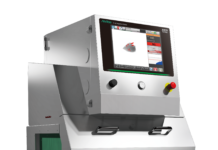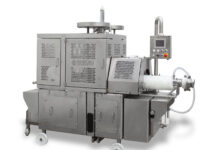 There are strong scientific assumptions which confirm the fact that an excessive meat consumption is not beneficial for health, because of various factors such as its high cholesterol and saturated fatty acids content; in addition, these foods often are prepared by adding a lot of salt. Food companies of the meat sector are evolving to offer products which meet the new nutritional needs, in particular by reducing the salt and fat content in products such as salami, ham, etc.: for example, in “mortadella” (Bologna sausage), the products now on the market contain, on average, 5% less of fats and 10% less of salt compared with the “mortadella” made 20 years ago. Besides reducing the quantity of damaging substances, another approach used to have healthier meat products is to fortify them with beneficial substances: this is now common in bakery and milk and cheese products, but not so much in meat products: below some practical applications already available are listed.
There are strong scientific assumptions which confirm the fact that an excessive meat consumption is not beneficial for health, because of various factors such as its high cholesterol and saturated fatty acids content; in addition, these foods often are prepared by adding a lot of salt. Food companies of the meat sector are evolving to offer products which meet the new nutritional needs, in particular by reducing the salt and fat content in products such as salami, ham, etc.: for example, in “mortadella” (Bologna sausage), the products now on the market contain, on average, 5% less of fats and 10% less of salt compared with the “mortadella” made 20 years ago. Besides reducing the quantity of damaging substances, another approach used to have healthier meat products is to fortify them with beneficial substances: this is now common in bakery and milk and cheese products, but not so much in meat products: below some practical applications already available are listed.
Fat content reduction
A first simple approach consists in using leaner meat cuts and in reducing the addition of fats in case this is required (for example, in salami and ” mortadella”). However, this can be done only up to a certain limit or the consequence would be a product with unpleasant characteristics, not only as regards taste, but also for the texture (for example too hard). Therefore, to obtain particularly “light” products, it is necessary to make a partial replacement of fats with fat replacers, substances able to give the product similar sensorial characteristics to the original one, in particular as regards texture, without the calories and unhealthy effect of fats. Together with the reduction of fats, generally there is also an increased content of water, with the addition of substances able to retain it and to give an appropriate consistency, but at the same time a juiciness to the product. Among the fat replacers suitable for meat products, there are the protein type ones (for example whey, soy proteins, jellies and  collagen), those made of carbohydrates such as flours or starches (modified or not), thickeners such as gums (carrageenans, xanthans, etc.), or fibers such as cellulose and its derivatives: for example carboxymethylcellulose (CMC) and the microcrystalline cellulose (MCC) have been successfully used in products made of meat of an emulsified type, with the ability to give a growing density with the increase of cellulose concentration; it has been possible to replace with cellulose up to 50% of fats. It is also possible to use combinations of the above mentioned substances, for example to produce light frankfurters the combination of pork rind and wheat fiber was successfully used. An innovative ingredient of the fat replacers group is the konjac gel, made with a sub-tropical plant and which has been used for a long time in the vegetarian cuisine as a gelatin replacer; in fact, the rhizome of the plant is rich in glucomannans, polysaccharides able to create with water a highly viscous and low calorie gel. This gel maintains its consistency also during chewing and without melting immediately in the mouth: this characteristic makes it particularly suitable to create the structure of meat products. The partial replacement of fat with konjac gel makes it possible to obtain healthier and less caloric products, with no negative impacts on some characteristics of the product such as sensorial parameters and shelf life. Because the fats considered particularly dangerous for health are the saturated ones, it is possible to aim at meat products whose lipid component is mainly represented by unsaturated fatty acids or even polyunsaturated (polyunsaturated fatty acids – PUFA), which are particularly beneficial. A system to make this replacement consists in modifying the diet made up of animal derivatives, by introducing the type of desired lipids. Unfortunately lipids of this type are often room temperature liquids and therefore the products obtained in this way (whether they are through animal feeding or through addition into the meat product) have a less dense and more greasy look. In the case of salami, the consequence is not only a minor pleasantness for the consumer, but also technological problems such as difficulty in slicing. In spite of this, with the appropriate technological solutions (among which, for example, the addition of emulsifiers) it has been possible to obtain products in which up to 70% of solid fats was eliminated, replacing it in part with vegetable oils. In case the lipids to introduce have an organoleptic profile which is not compatible with the product (for example, introduction of fish oil rich in omega-3 acid fats), it is possible to recur to appropriate emulsifiers or to encapsulation, protecting in this way the PUFA (and also the products that contain them) from the rapid oxidation processes which characterize them.
collagen), those made of carbohydrates such as flours or starches (modified or not), thickeners such as gums (carrageenans, xanthans, etc.), or fibers such as cellulose and its derivatives: for example carboxymethylcellulose (CMC) and the microcrystalline cellulose (MCC) have been successfully used in products made of meat of an emulsified type, with the ability to give a growing density with the increase of cellulose concentration; it has been possible to replace with cellulose up to 50% of fats. It is also possible to use combinations of the above mentioned substances, for example to produce light frankfurters the combination of pork rind and wheat fiber was successfully used. An innovative ingredient of the fat replacers group is the konjac gel, made with a sub-tropical plant and which has been used for a long time in the vegetarian cuisine as a gelatin replacer; in fact, the rhizome of the plant is rich in glucomannans, polysaccharides able to create with water a highly viscous and low calorie gel. This gel maintains its consistency also during chewing and without melting immediately in the mouth: this characteristic makes it particularly suitable to create the structure of meat products. The partial replacement of fat with konjac gel makes it possible to obtain healthier and less caloric products, with no negative impacts on some characteristics of the product such as sensorial parameters and shelf life. Because the fats considered particularly dangerous for health are the saturated ones, it is possible to aim at meat products whose lipid component is mainly represented by unsaturated fatty acids or even polyunsaturated (polyunsaturated fatty acids – PUFA), which are particularly beneficial. A system to make this replacement consists in modifying the diet made up of animal derivatives, by introducing the type of desired lipids. Unfortunately lipids of this type are often room temperature liquids and therefore the products obtained in this way (whether they are through animal feeding or through addition into the meat product) have a less dense and more greasy look. In the case of salami, the consequence is not only a minor pleasantness for the consumer, but also technological problems such as difficulty in slicing. In spite of this, with the appropriate technological solutions (among which, for example, the addition of emulsifiers) it has been possible to obtain products in which up to 70% of solid fats was eliminated, replacing it in part with vegetable oils. In case the lipids to introduce have an organoleptic profile which is not compatible with the product (for example, introduction of fish oil rich in omega-3 acid fats), it is possible to recur to appropriate emulsifiers or to encapsulation, protecting in this way the PUFA (and also the products that contain them) from the rapid oxidation processes which characterize them.



